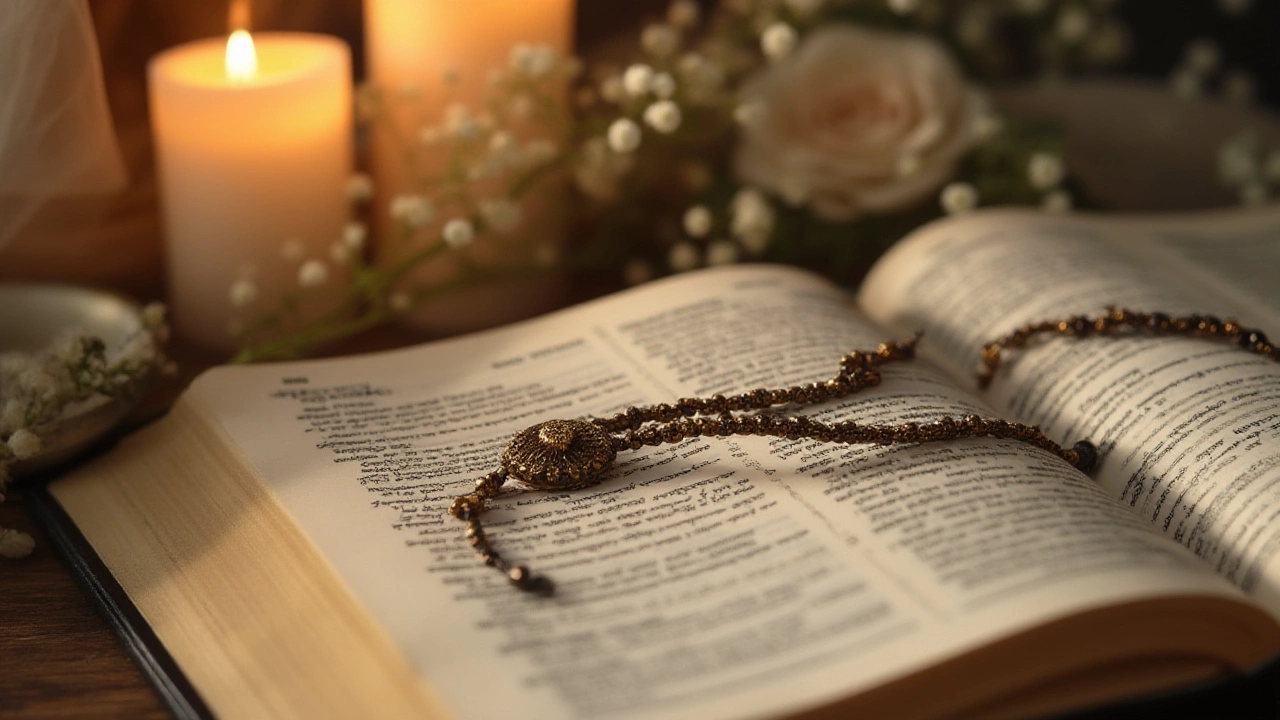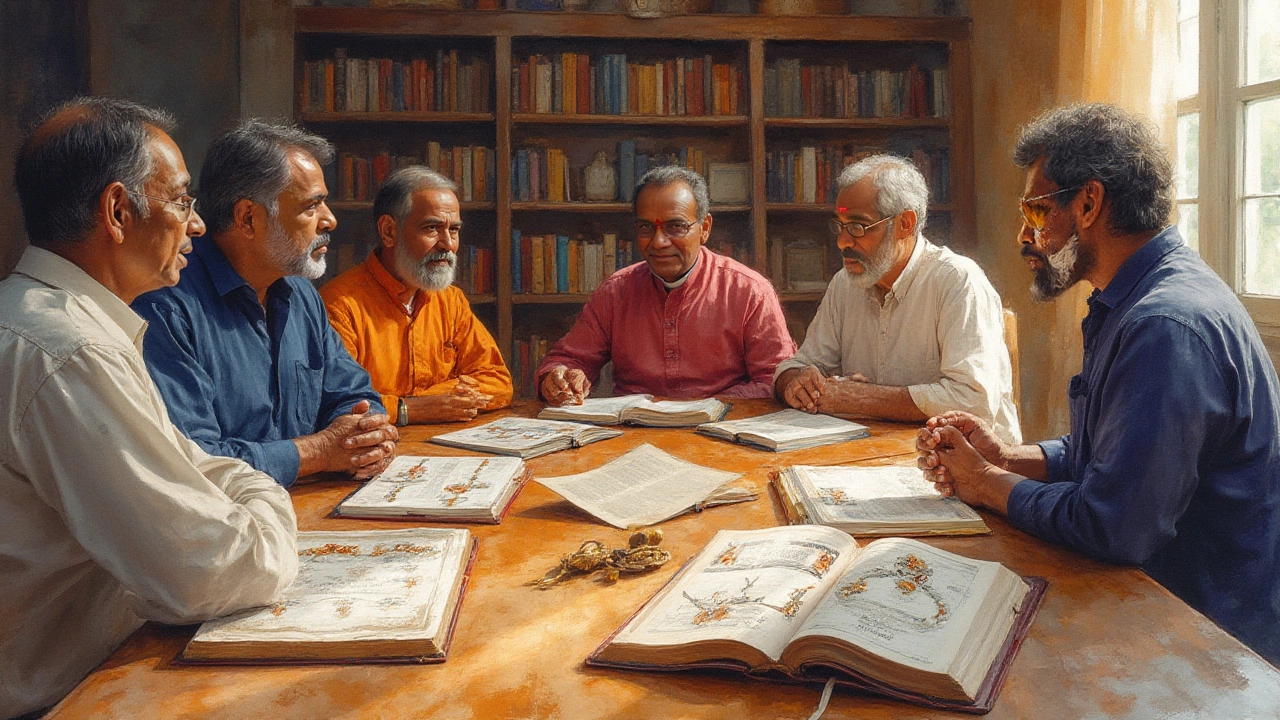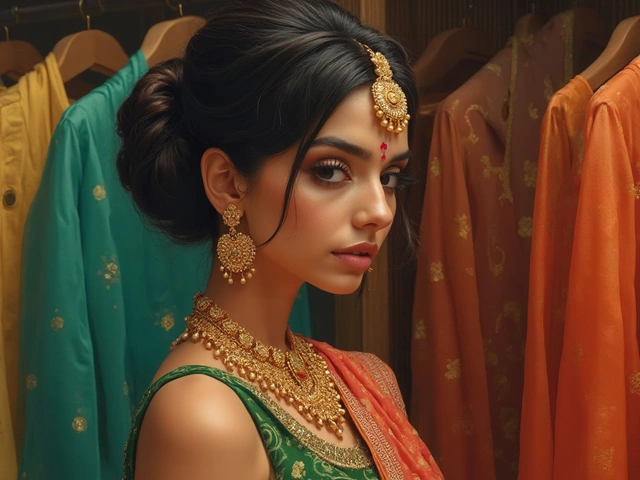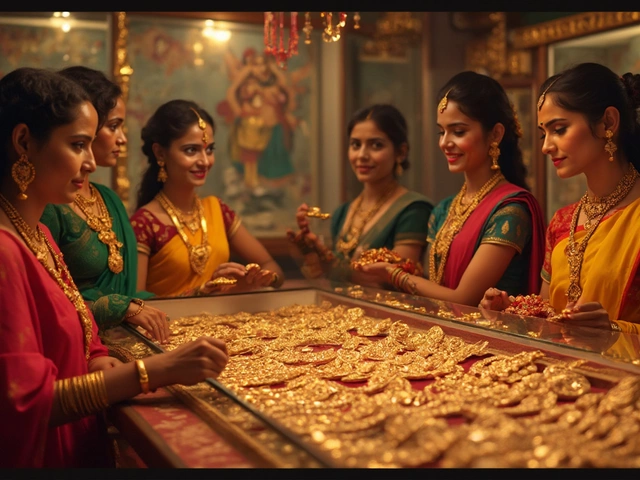
Ever wondered if the Bible mentions the mangalsutra? Most people are surprised to find that it doesn’t—at least, not in the way you might expect. With flashy Instagram reels and wedding hashtags, modern couples wear mangalsutras for tradition, style, or family pride. But does this famous black-and-gold necklace have ancient Christian roots or biblical authority? Spoiler alert: the answer opens up a much deeper, more interesting conversation than most folks think.
The Mangalsutra: Its Origins and Cultural Journey
The mangalsutra is a well-known piece of jewelry worn in many Hindu communities after marriage. It’s not a random necklace; it’s a symbol with layers of meaning. Black beads and gold often make up this necklace. The black beads? Those are believed to protect the marriage from evil and negativity. The gold? That’s for prosperity and lasting good luck. The earliest use of something like the mangalsutra pops up in ancient South Indian texts—there’s nothing in the Hebrew, Greek, or Aramaic parts of the Bible about a string of beads for married women.
Anthropologists say that traditions around the mangalsutra go back over two thousand years. In Andhra Pradesh, Tamil Nadu, and Maharashtra you’ll find different versions, all celebrated in local wedding rituals. A peek at old temple carvings will show women with similar necklaces, so it’s not a pop-culture trend. But all the symbols, meanings, and the act of the husband tying the necklace around the bride’s neck during the wedding—these are tied to South Asian customs, not to Christian scripture.
Here’s a fun fact: the word “mangalsutra” is actually a Sanskrit phrase. “Mangal” means auspicious, and “sutra” means thread. Together, it’s an “auspicious thread.” You won’t find this word—or the item itself—inside biblical texts, even with the wildest translation. So why do people sometimes think there’s a hidden Christian story here? Mostly because the symbolism of marital faithfulness and protection is universal, even if the objects and rituals are local.
If you visit a Christian wedding in India, you’ll see plenty of brides wearing mangalsutras. But that’s not because the Bible prescribes it. It’s about culture blending with personal faith. In Kerala, Christian weddings might have a “minnu,” which is a small pendant on a thread or chain, often with a cross—again, an example of tradition and faith mixing together.
What the Bible Actually Says About Jewelry and Marriage
Let’s get specific. The word “mangalsutra” doesn’t appear anywhere in the Bible, Old or New Testament. There’s not even a mention of an equivalent necklace or wedding thread. Biblical wedding traditions included things like rings, veils, and gifts, but the closest you get to jewelry-for-marriage is in the Hebrew custom of giving nose rings or bracelets—never a black-beaded thread. Genesis 24:22 talks about Isaac’s servant giving Rebekah a nose ring and bracelets as a sign of betrothal, but not a necklace worn throughout marriage.
The New Testament keeps it simple: marriage is about mutual commitment, love, and respect, not about any specific adornment. Peter writes to Christian women in 1 Peter 3:3-4: “Your beauty should not come from outward adornment, such as elaborate hairstyles and the wearing of gold jewelry or fine clothes, but it should be that of your inner self…” But Peter’s point isn’t to ban jewelry—it’s about not making it the focus of your identity or your faith.
The Song of Solomon, a book about love and marriage, gives shout-outs to neck chains, earrings, and other bling as part of ancient romance, but never prescribes any one piece of jewelry for wedding ceremonies. In fact, you could say the Bible cares way more about the heart and intention than any style statement.
| Biblical Wedding Jewelry | Symbolic Meaning | Bible Reference |
|---|---|---|
| Nose ring | Betrothal, promise | Genesis 24:22,47 |
| Bracelets | Gift, blessing | Genesis 24:22,30 |
| Head ornaments | Adornment, honor | Ezekiel 16:11-12 |
| Necklaces | Adornment, affection | Song of Solomon 1:10 |
You won’t find a rule in the Bible about married women wearing or not wearing a specific piece of jewelry. This gives people a lot of freedom to blend faith and tradition—whether that’s wearing a mangalsutra, a wedding ring, or nothing at all.

Common Myths: Bible Verses, Mangalsutra, and Faith
Here’s where things get tangled. Some well-meaning friends or relatives claim “the Bible forbids” or “the Bible endorses” certain jewelry—including the mangalsutra. Neither claim is accurate. The Bible is basically silent on the issue of this necklace. On Christian talk shows in South India, people sometimes debate whether a woman should keep wearing her mangalsutra after converting. The Bible leaves the choice up to personal conviction.
Ever heard someone use Deuteronomy or Leviticus to talk about forbidden jewelry? Those verses deal with pagan symbols of the time or with certain priestly rituals. They’re not about the mangalsutra, which didn’t even exist in those cultures. On the other hand, some folks argue, “A Christian wife should never wear Hindu symbols,” but again, the Bible doesn’t call out specific jewelry as religious or irreligious. The focus, especially in the New Testament, is always about faith expressed inwardly and in actions, not by your accessories.
The idea that the mangalsutra can “save” a marriage or has spiritual power definitely isn’t biblical. While protection and love are important biblical values, the necklace itself isn’t credited with supernatural abilities by any of the apostles, prophets, or Jesus himself. So if you want to wear a mangalsutra because it makes you feel connected to your family or your roots, there’s nothing in Christian doctrine that says you can’t. Just don’t expect it to have a magical effect on your marriage.
Mangalsutra in Modern Christian Weddings: Tradition vs. Faith
Let’s not ignore reality—many Indian Christian brides wear mangalsutras, and some Westernized Indian Christian communities are adopting wedding rings instead. My own friend Anita wore both at her wedding. Her husband’s Catholic family insisted on following their local tradition, but their church ceremony focused on the exchange of rings and the power of prayer, not the necklace itself.
If Christian couples choose to wear mangalsutras, it’s more of a nod to tradition than a religious must. Sometimes families don’t want to let go of cherished customs, and that’s honestly pretty understandable—who wants to get into a family row right after tying the knot? At the same time, more churches in India and abroad are taking a relaxed approach, with pastors reminding everyone that the real meaning of marriage comes from commitment and God’s blessing, not a specific chain, bead, or design.
When Maya and I got married, we had a serious conversation about what cultural traditions we wanted to keep and which ones felt forced. We ended up blending a few things—her great-grandmother’s gold bangles, a modern ring, and a little family prayer. No mangalsutra, but it was personal and right for us. That’s the heart of this whole discussion. The *mangalsutra* is a deeply cultural thing; for many Indian Christian women, it can be a sign of respect for parents or for sentimental reasons. The Bible doesn’t speak for or against it. If you ask around at multi-faith weddings or in diaspora Indian churches, you’ll see a mix of practices—some brides wear it, some don’t, and almost all say it’s more about family than faith.
- If you’re thinking about wearing a mangalsutra at your wedding and you’re worried about what your faith says, talk it over with people you trust.
- There’s freedom in Christian tradition—God cares more about your heart than your jewelry box.
- Don’t let anyone guilt you. Do what meshes with your values and relationships.
Modern Christian weddings in India often celebrate this mix. Many pastors remind couples that their vows and lives matter most. And let’s be honest—not wearing a mangalsutra isn’t going to change the love between a husband and wife. The Bible just isn’t that prescriptive about fashion.

Tips for Navigating Faith, Family, and Jewelry Traditions
The best advice? Don’t overthink it. Weddings can already be stressful. Trying to balance culture and faith sometimes feels like walking a tightrope, especially when relatives weigh in with “how things are supposed to be.” Here’s what helped people I know:
- Ask yourself what the mangalsutra means to you: Is it safety, connection, fashion, or pressure?
- Discuss openly with your partner. Lay out your personal beliefs and traditions. No hiding—wedding planning is more fun with honesty!
- Talk to a faith leader if you’re unsure. Most will remind you the symbol is secondary; vows and love are the real anchors.
- If you decide to skip the mangalsutra, replace it with something meaningful—maybe a pendant with a cross or a family heirloom.
- Respect your family’s feelings, but stand up for your choices. Bridging generations is tough, but authenticity lasts longer than any necklace.
For those who do wear mangalsutras, you can even make it personal. Add a tiny cross pendant. Choose a simpler chain. Write your own traditions. Maya’s cousin did just that—her mangalsutra had an initial charm for both her and her husband. It made everyone smile, especially her grandma, who loves both Jesus and family tradition.
Just remember: your marriage is about you and your partner’s bond, not about following someone else’s rulebook—or even your family’s old photo albums. The Bible gives you plenty of space to make your own traditions. The mangalsutra might have a place in your wedding or daily life, but *only if it feels right for you.


